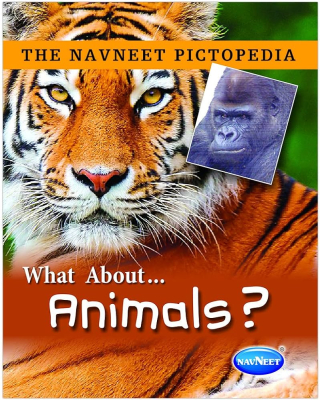What is a pictopedia?

A pictopedia is a pictorial encyclopedia that aims at making learning fun. With pages full of interesting pictures and interesting information, these innovatively curated books are designed to ignite wonder and curiosity.
Our club announced on the notice board about a week ago for volunteers to make presentations on "A Book that Liked Very Much" in its regular meetings. We were surprised by the huge response, and we selected a student from the eighth class who wanted to speak on pictopedia. As this was totally a new area, we thought many of us would benefit from his input. The following report sums up some of the key ideas he presented.
He began his presentation, "When I was randomly running my eyes over the books on a shelf in a bookshop which was labelled children's literature, I found the expression pictopedia, with the title. What About....Great Personalities? I am familiar with encyclopedias but not this, and hence out of curiosity I flipped through the book. As it was a slender one with only 50 pages and priced at just Rs.150, I asked my father to buy it for me."
This made us realise how visiting libraries and bookshops, rather than merely surfing the net could enable us to identify interesting titles.
As he had brought the book with him, he quoted a few lines from the preface and blurb to emphasise the purpose of this publication: The coinage pictopedia.
indicates a pictorial encyclopaedia...It is meant for young readers who want to open their eyes in wonder to see the world as they see it for the first time; it is also meant for the adult who wishes to recollect what is lost in the corners of the memory.... Making learning fun is the sole aim of the pictopeda' series." Going through the book, he said, he found it useful to whoever wanted to know and recall some of the important details of the personalities included in it.
After reading out the names of a few personalities from the content page, namely, aristotle. Thomas Alva Edison. William Shakespeare, Napoleon, zakir hussain, Archimedes, and osho (Rajaneesh), he pointed out that there are 45 personalities included in the book. For each of them, one page was allocated to cover the most significant details - unlike the usual encyclopedias, it gave only the vital information of a personality in about 100 words. To illustrate it, he read out the details of Nelson Mandela and drew our attention to the details such as his birth, the position he held, his education, the years he spent in prison, and his status as a world leader. These factual descriptions gave us a comprehensive view of his personality, instead of being cluttered with too many details leading to confusion and often forgetting them. The page on Mandela also carried two other features, viz., a large circle highlighting his most distinguishing deeds- half of his salary was donated to the welfare of poor children and the other. Did you Know? which in the form of bullets mentioned the awards and the honours he had received. Along with these, two of his pictures were placed to concretise the portrayal. The same format was observed for all the personalities dealt with
The most noteworthy aspect of the book was the selection of personalities, chosen from different periods multiple walks of life and who excelled in their fields: the timeline chosen extended from the ancient time to the present, for instance, from Aristotle of 384 BC to Aryabhatta of 476 AD to Sachin Tendulkar and to A. R. Rahman, including a large number of the contemporary personalities. Further, they were identified from various fields such as politics, philosophy, technology, painting to films, sports, writers, and music and there were at least four of them representing a particular domain, the range of areas covered brought added value to the book.
Reading about any personality, he observed, took a maximum of five minutes which helped to absorb almost all the details. He proudly mentioned that after becoming familiar with these celebrities, he had turned out to be a popular conversationalist as he was able to refer to them on appropriate occasions while interacting with his friends.
The series, What About is published by navneet Education Limited, based in Mumbai and they have brought out several interesting titles. He concluded by acknowledging the claim made in the blurb of the book that the attractive pictures and unique presentation made the book worthy of possession by any.
Picture Credit : Google
